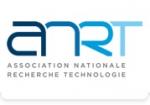Estimation de la température des batteries lithium-soufre par impédance à l'aide de réseaux de neurones artificiels // Impedance Based Temperature Estimation of Lithium-Sulfur Cells Using Artificial Neural Networks
|
ABG-129504
ADUM-63398 |
Sujet de Thèse | |
| 14/03/2025 |
École polytechnique
Palaiseau Cedex - France
Estimation de la température des batteries lithium-soufre par impédance à l'aide de réseaux de neurones artificiels // Impedance Based Temperature Estimation of Lithium-Sulfur Cells Using Artificial Neural Networks
Apprentissage automatique, batteries lithium-soufre, Impédance
Machine learning, Lithium-Sulfur bateries, Impedance
Machine learning, Lithium-Sulfur bateries, Impedance
Description du sujet
Cette thèse explore une approche d'estimation de la température interne des batteries sans capteur, combinant les données de spectroscopie d'impédance électrochimique (EIS) avec des réseaux de neurones artificiels (ANNs) [4]. Traditionnellement, un système de gestion de batterie (BMS) repose sur des capteurs intégrés, tels que des thermistances ou des thermocouples, pour surveiller la température interne et prévenir les risques d'emballement thermique [5]. Dans les méthodes sans capteur, le spectre d'impédance d'une batterie, obtenu par EIS, contient des signatures caractéristiques en corrélation avec sa température interne. En entraînant un ANN à reconnaître ces modèles, il devient possible de prédire la température interne de la batterie à partir de signaux électriques mesurables (tension, courant et temps). Une fois intégré à un BMS avancé, ce procédé permet une surveillance thermique en temps réel, améliorant la sécurité et réduisant les risques tels que la surchauffe, les incendies ou les explosions. L'un des principaux avantages de la méthode EIS-ANN réside dans sa rapidité d'estimation de la température, réalisée en quelques millisecondes, sans nécessiter de résolution intensive d'équations aux dérivées partielles.
------------------------------------------------------------------------------------------------------------------------------------------------------------------------
------------------------------------------------------------------------------------------------------------------------------------------------------------------------
This thesis explores a sensorless temperature estimation method that combines data from electrochemical impedance spectroscopy (EIS) with artificial neural networks (ANNs).[4] Traditionally, a Battery Management System (BMS) relies on integrated sensors, such as thermistors or thermocouples, to monitor internal temperature and to prevent hazards like thermal runaway.[5] In sensorless methods, the impedance spectrum of a battery, obtained through EIS, contains subtle signatures that correlate with its internal temperature. By training an ANN to recognize these patterns, it becomes possible to predict the battery's internal temperature using measurable electrical signals (voltage, current, and time). When integrated into an advanced BMS, this approach enables real-time thermal monitoring and management, enhancing safety and mitigating risks such as overheating, fires, or explosions. A key advantage of the EIS-ANN method is its rapid temperature estimation, which is completed within milliseconds, eliminating the need for computationally intensive partial differential equation solving.
------------------------------------------------------------------------------------------------------------------------------------------------------------------------
------------------------------------------------------------------------------------------------------------------------------------------------------------------------
Début de la thèse : 01/10/2025
------------------------------------------------------------------------------------------------------------------------------------------------------------------------
------------------------------------------------------------------------------------------------------------------------------------------------------------------------
This thesis explores a sensorless temperature estimation method that combines data from electrochemical impedance spectroscopy (EIS) with artificial neural networks (ANNs).[4] Traditionally, a Battery Management System (BMS) relies on integrated sensors, such as thermistors or thermocouples, to monitor internal temperature and to prevent hazards like thermal runaway.[5] In sensorless methods, the impedance spectrum of a battery, obtained through EIS, contains subtle signatures that correlate with its internal temperature. By training an ANN to recognize these patterns, it becomes possible to predict the battery's internal temperature using measurable electrical signals (voltage, current, and time). When integrated into an advanced BMS, this approach enables real-time thermal monitoring and management, enhancing safety and mitigating risks such as overheating, fires, or explosions. A key advantage of the EIS-ANN method is its rapid temperature estimation, which is completed within milliseconds, eliminating the need for computationally intensive partial differential equation solving.
------------------------------------------------------------------------------------------------------------------------------------------------------------------------
------------------------------------------------------------------------------------------------------------------------------------------------------------------------
Début de la thèse : 01/10/2025
Nature du financement
Précisions sur le financement
Concours IPP ou école membre*
Présentation établissement et labo d'accueil
École polytechnique
Etablissement délivrant le doctorat
École polytechnique
Ecole doctorale
626 Ecole Doctorale de l'Institut Polytechnique de Paris
Profil du candidat
Le candidat doit être titulaire d'un Master 2 Recherche en physique appliquée, science des matériaux ou informatique et posséder une solide expérience en intelligence artificielle et apprentissage automatique. La maîtrise de Python, MATLAB ou de langages de programmation similaires pour le développement de modèles d'IA et le traitement des données est requise. Une connaissance approfondie de la spectroscopie d'impédance électrochimique est indispensable, et une familiarité avec les batteries serait un atout.
Excellentes compétences en communication écrite et orale (anglais obligatoire) et autonomie dans la rédaction de rapports. Esprit d'équipe essentiel.
Le candidat devra fournir l'ensemble des diplômes obtenus ainsi qu'un relevé de notes des deux années de Master.
The candidate should hold a Master 2 Research degree in applied physics, materials science or computer science and have strong experience in AI and machine learning. Proficiency in python, MALAB or similar programming languages for AI model development and data processing is required. knowledge of electrochemical impedance spectroscopy is essential and familiarity with batteries would be an advantage. Excellent written and verbal communication skills (English mandatory) and independent in writing reports. Strong team player. The candidate will have to provide all the diplomas already obtained, as well as a transcript of the marks already acquired for the two years of Master.
The candidate should hold a Master 2 Research degree in applied physics, materials science or computer science and have strong experience in AI and machine learning. Proficiency in python, MALAB or similar programming languages for AI model development and data processing is required. knowledge of electrochemical impedance spectroscopy is essential and familiarity with batteries would be an advantage. Excellent written and verbal communication skills (English mandatory) and independent in writing reports. Strong team player. The candidate will have to provide all the diplomas already obtained, as well as a transcript of the marks already acquired for the two years of Master.
01/10/2025
Postuler
Fermer
Vous avez déjà un compte ?
Nouvel utilisateur ?
Besoin d'informations sur l'ABG ?
Vous souhaitez recevoir nos infolettres ?
Découvrez nos adhérents
 PhDOOC
PhDOOC  Groupe AFNOR - Association française de normalisation
Groupe AFNOR - Association française de normalisation  ASNR - Autorité de sûreté nucléaire et de radioprotection - Siège
ASNR - Autorité de sûreté nucléaire et de radioprotection - Siège  Généthon
Généthon  MabDesign
MabDesign  CESI
CESI  Ifremer
Ifremer  SUEZ
SUEZ  Aérocentre, Pôle d'excellence régional
Aérocentre, Pôle d'excellence régional  ADEME
ADEME  TotalEnergies
TotalEnergies  Institut Sup'biotech de Paris
Institut Sup'biotech de Paris  CASDEN
CASDEN  MabDesign
MabDesign  Tecknowmetrix
Tecknowmetrix  ANRT
ANRT  ONERA - The French Aerospace Lab
ONERA - The French Aerospace Lab  Laboratoire National de Métrologie et d'Essais - LNE
Laboratoire National de Métrologie et d'Essais - LNE  Nokia Bell Labs France
Nokia Bell Labs France





